Banner photo is of the T. A. Lytle factory on Sterling Road in 1912. From the City of Toronto Archives.
When I first began this page, a year and a half ago, I wasn’t quite sure where to start. For several years previous I’d been taking photos of old buildings I loved and feared for and so (given Toronto’s reckless building boom) I’d amassed quite a collection.
In the spirit of laying seed for something better in the future, I quickly put together a few posts just to get it going. The first one just happened to be the old T. A. Lytle factory on Sterling Road, very near where I grew up. At the time, I had no idea that it would become the most searched for site I’d write about. So it kind of pains me that I never gave Lytle and his company a proper look. But that’s something I hope to remedy today.
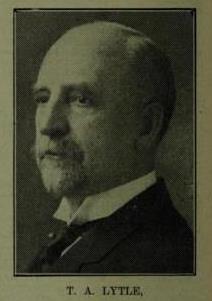
Thomas Alexander Lytle was born in Northern Ireland on November 6th, 1844. He arrived in Canada in 1871 and began clerking in William Wilson’s Vinegar Works:
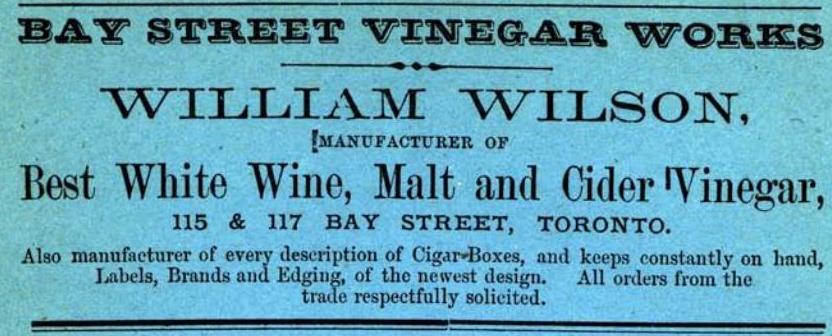
At the time, William Wilson was one of just two vinegar manufacturers in Toronto and his Vinegar Works were much admired:
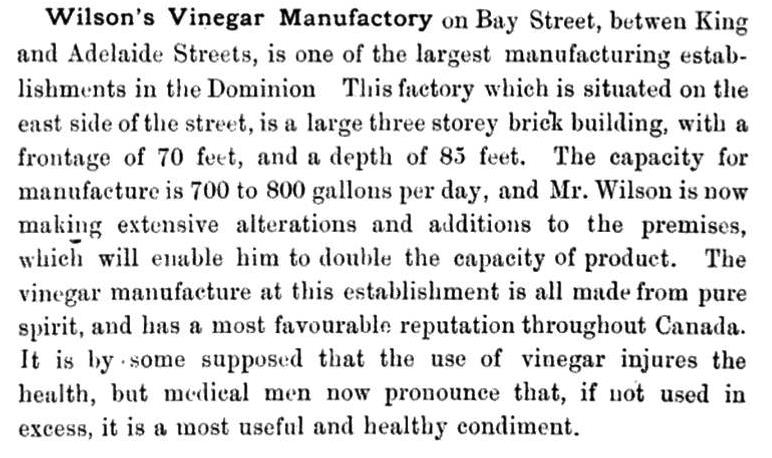
That Wilson’s factory was held in high esteem may not seem that interesting a tidbit on the face of it, but when you consider how important vinegar was for food preservation (especially in the pre-home refrigeration era) you begin to get a sense of what it meant in the city.
Oh sure, people weren’t entirely dependent on vinegar makers like Wilson, as they could certainly make their own – but it wasn’t exactly the easiest chore:
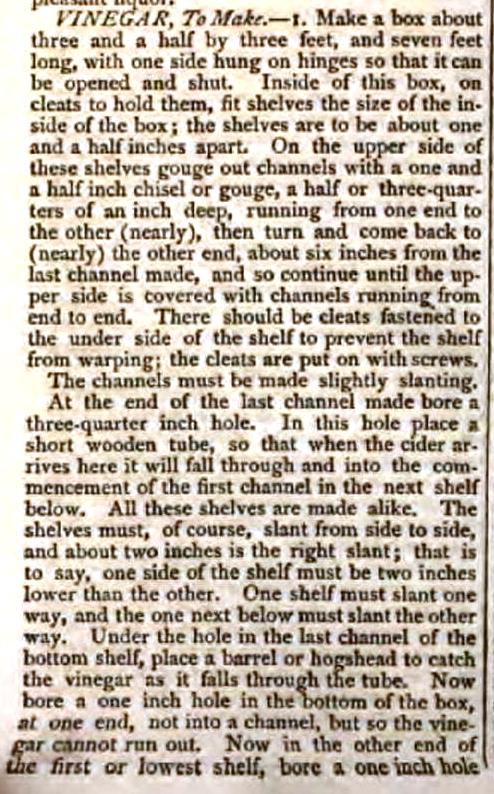
Still with me? No? Okay, on we go:
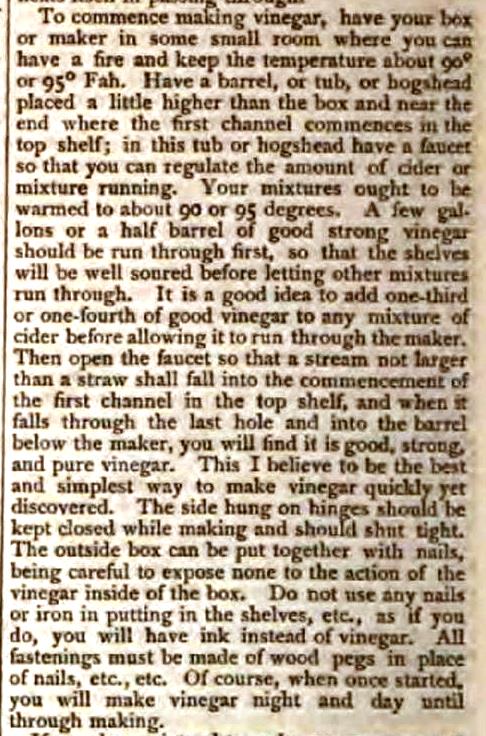
I don’t know about you, but I know I’d have saved myself the cost of lumber and hardware and just bought a jug of the stuff.
Anyhow …
Though just a clerk at Wilson’s, Thomas Lytle gained some vinegar know-how and in 1882 he struck out on his own, opening his own factory. Well, he wasn’t entirely on his own. With the partnership of a fellow named Samuel Crane, Lytle opened the T. A. Lytle & Co factory on Richmond St. W. It was just a stone’s throw from William Wilson’s place – something that I suspect must’ve been vinegar in the wound for the former employer. …sorry, couldn’t help myself there.
Here’s a look at the neighbourhood while Lytle was in residence:
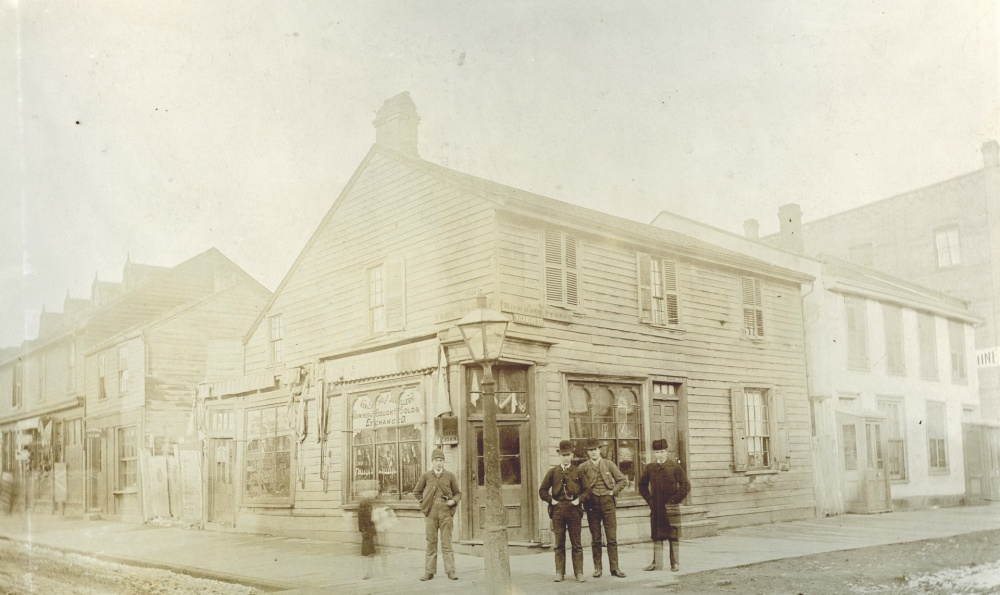
Should you wish to place it, this is the same corner today:
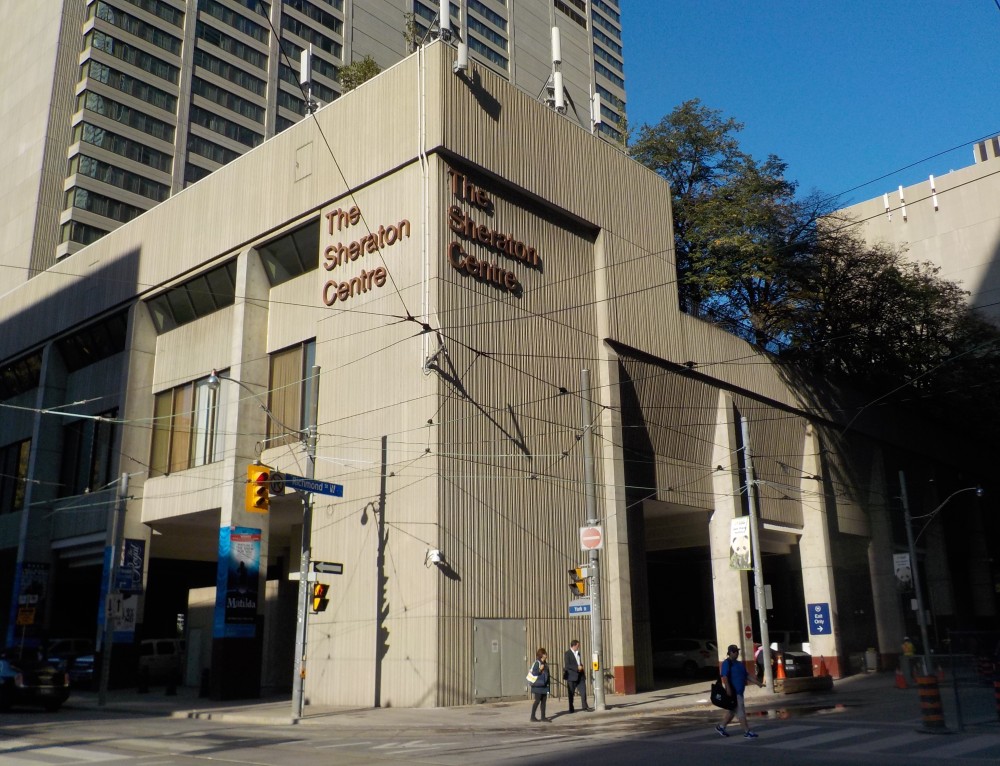
But getting back to Lytle … The same year he and Crane opened their vinegar factory, they also opened a coal and wood business called Samuel Crane & Co – this time with Lytle acting as the “Co.” I imagine there must’ve been a crossover and some of that wood and coal made it’s way over to Lytle’s on Richmond.
Though Lytle was listed as a vinegar manufacturer, he was actually much more than that. Here are just a few examples of what was on offer from the company:
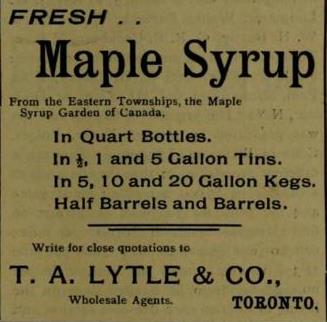
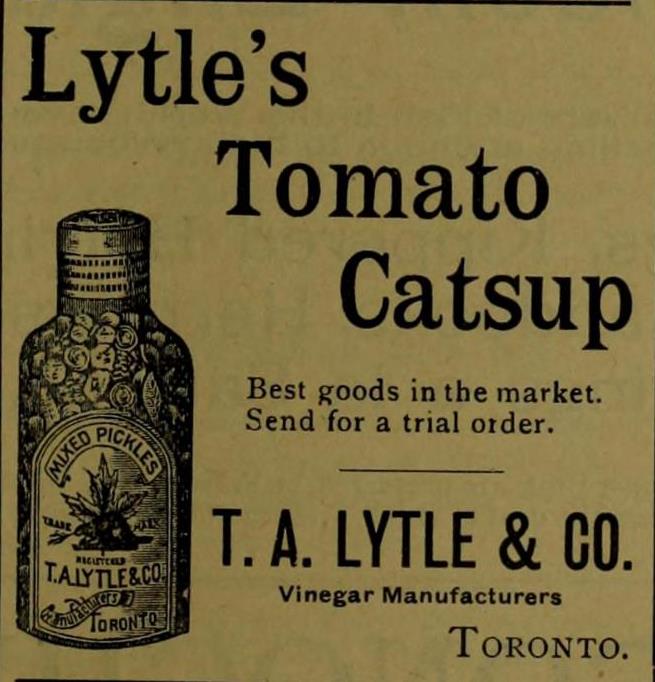

In an age when many households did their own pickling and canning, Lytle was one of many who were looking to capitalize by taking the chore off their hands:

Despite what the grocers’ association believed, I’d say that it was more likely people turned to store-bought condiments because it was a heck of a lot less work. Also, presumably, factory sterilization meant not worrying about poisoning your family with botulism anymore. … Of course, that was just jams – pickles presented an entirely different danger:
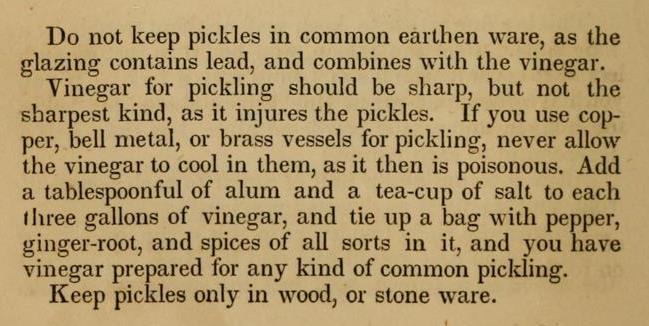
Sure, Miss Beecher’s advice was printed shortly before the glass Mason jar came along – but its arrival didn’t really diminish the threat much. Actually, it really hadn’t diminished it at all, as we discover from this 1901 report:
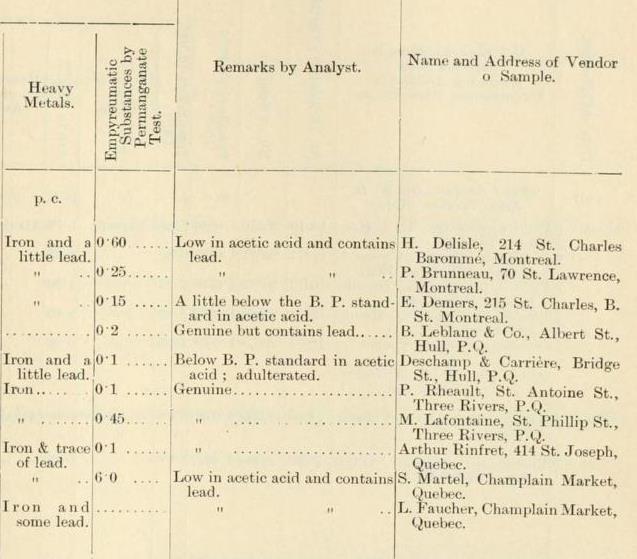
I’m sorry to say that the second last chemical analysis there – the one with lead and high in empyreumatic substances – was from a jar of Lytle’s pickles. I won’t even tell you about his vinegars. But hey, his jams checked out fine…
Just the same, by 1908 Lytle’s business was booming and a larger factory was soon necessary for the production of the company’s many products. He moved out of the busy downtown core to the west end of the city, which was then only just being developed. There he built a large factory on Sterling, a short road which had been cut through land owned by a lumber merchant named William Leak.
The location was perfect for Lytle, snuggled as it was between the Canadian Pacific and Grand Trunk Railways.
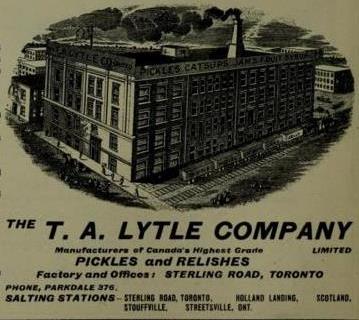
The new street address also worked well for Lytle as the company already had a product line named “Sterling”:

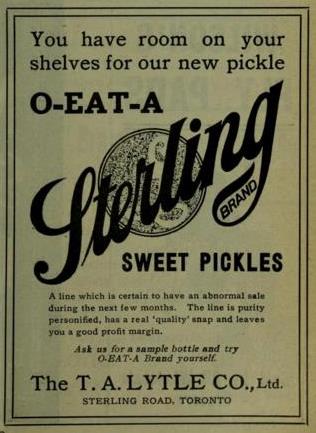

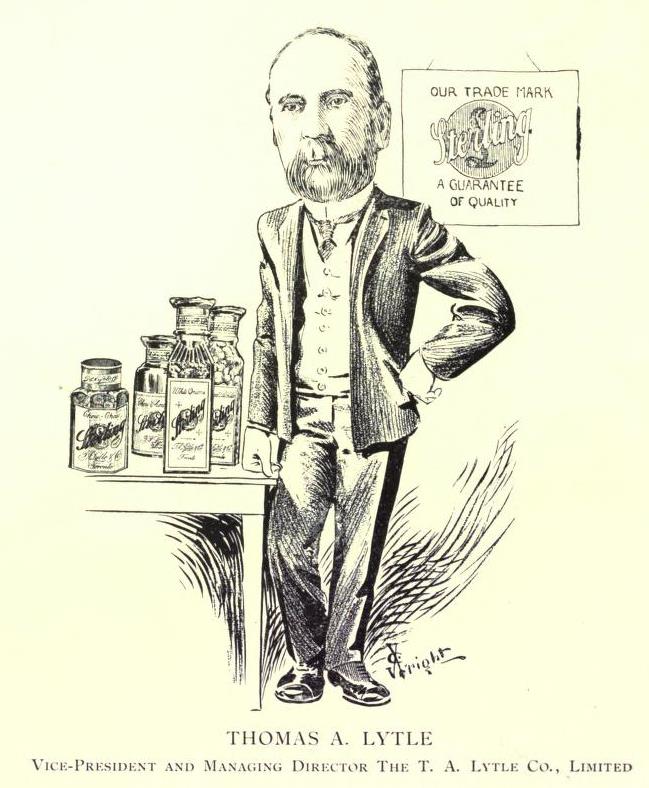
While I haven’t any photos of the interior of the T. A. Lytle factory, I can share these illustrations of what it likely looked like – thanks to the industry reveling in the modernization of pickle factories:
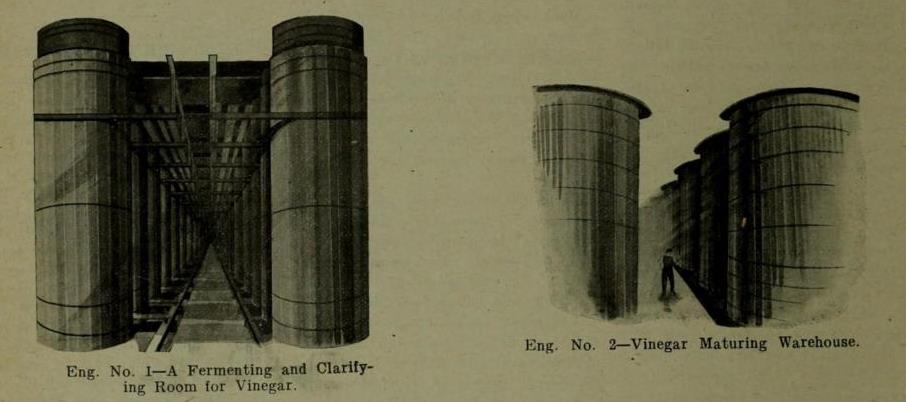
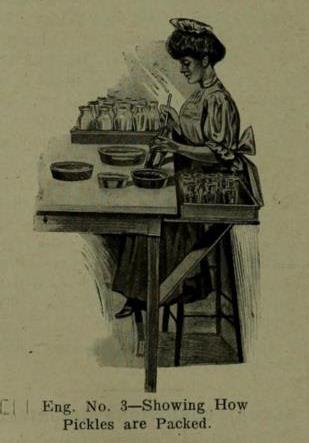
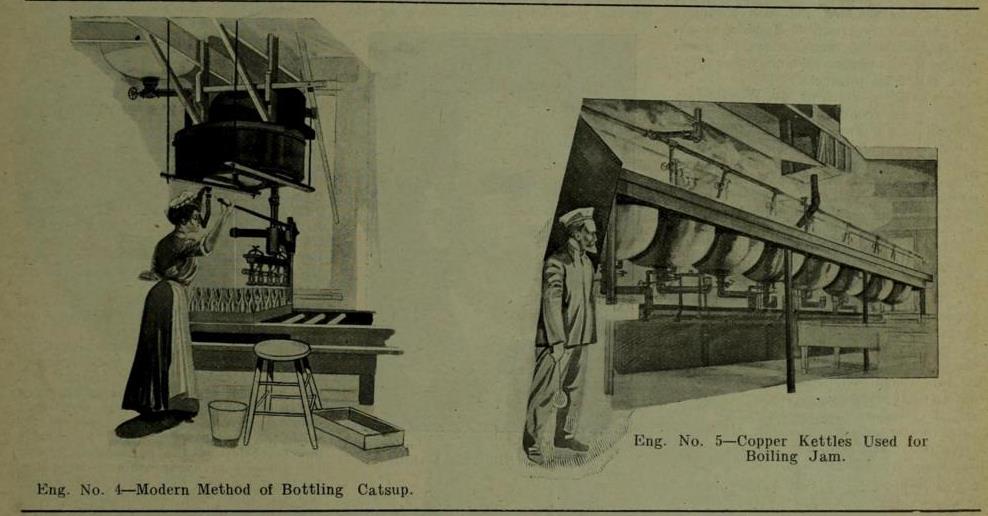
One would imagine that running a large pickling plant, as well as partnering in a coal concern, would’ve been enough work for anyone (here I mean me.) But not for Lytle. He also found time to serve on the Collegiate Institute School Board and the City Counsel, as well as act as president of the Westminster Publishing Company.
So it’s hardly surprising that one day, in early April of 1911, after his usual workday at the Sterling Road factory he suddenly died. He was just 66 years old.
Following his death, the company continued on under his sons’ leadership but appears to have closed down sometime in the mid to late 1920s. The factory then became home to Scythes Inc – a flag and banner maker which has been rebranded as Flying Colour Internationals, but which used to manufacture canvas and cloths.
Ages ago, at the beginning of this post, I mentioned that the T. A. Lytle factory is the most searched for site I’ve written about – and I think I know the reasons for this. For one thing, it is absolutely covered in ghost signs for the Lytle and Scythes brands. Secondly, a foot and bike path was built a few years ago which runs past the site, providing a great view of the old signage. Third, there is the mystery of one of these signs reading “Fountacanvas.” More than any other, it’s this word which seems to fire people’s interest.
Well, thanks to a comment on my first Lytle post, I found out that a wonderful company called Muralform was enlisted to restore the fading ads and a palimpsest – one portion of which was Lytle’s ad for fountain supplies and the other Scythes’ for canvas – which is how “Fountacanvas” came to be.
Here’s a look at some of the century old Lytle signs – pre-restoration:
As I mentioned earlier, I originally took these photos years ago when I feared for the building. Growing up just a few blocks away, it was like a long-time neighbour who’d always been a part of my world, and I worried I’d come home one day to find it no more. Happily, I now find I needn’t have worried – it’s not only being well looked after, it’s long history has been embraced and celebrated.



Glad the building has been preserved, Kate. Interesting story about Mr. Lytle and his factory. And what a great juxtaposition of the same corner, back then and now. (Agree – that’s an ugly modern building. We went through a stage where architects thought cold, square and ugly were beautiful.)
LikeLiked by 1 person
Thank you Cynthia! I’m so pleased you agree – on all counts.
LikeLiked by 1 person
You’ve only been blogging for a year and a half? It feels like longer (in a good way!). I don’t know what I did without your thoughtful and delightful comments on my blog, and of course I knew practically nothing about Toronto before I started reading your blog! Now I not only know cool stuff about its history, I get to learn with the benefit of amusing picture captions (the Mr. Copper Kettles one made me lol, as did Effie’s hairy pickles)! I’m not a vinegar fan, but I too could do with a half barrel of maple syrup. Hell, with all the expense of shipping it over, might as well go for a full barrel! Probably still cheaper than buying syrup here!
LikeLiked by 1 person
It really does feel longer! And thank you so much! That you read my posts, and write brilliant comments, means a lot to me – even more so because I’m such a fan of your site. Makes me wish I had a barrel of syrup to thank you with!
LikeLiked by 1 person
Absolutely fabulous piece … I love your “detectivry” (isn’t a word. should be.) And, if I had a band that sounded like a kinda-sorta mix up of Mumford & Sons and the Avett Brothers I would definitely name my next album “Vinegar and Cigar Boxes.”
And, hooray for those wise souls who actually see the value in saving and restoring and preserving the history, the buildings, and the signage of our communities.
LikeLike
Ha! I would buy that album. And thank you so much. I’m happy to hear you enjoyed it. It means a lot to me – especially because I love the brilliant “detectivry” (agreed, it should be a word) and respect for history in your writing. Wonderful stuff!
LikeLiked by 1 person
Hello K, I have now painted some new drake signs on 128 sterling rd. I would be interested in how you think they did with meshing the old with the new.
LikeLiked by 2 people
Thanks so much for letting me know! I can’t wait to take a look – sounds like a cool project. Katherine
LikeLike
I finally had a chance to visit the Drake Commissary last night to see your work, and I was just astounded. Such a wonderful job! I LOVE the new signs – they’re perfect and meld seamlessly with the Lytle ones. It made my heart very happy to see. Bravo!
LikeLike
I loved that I stumbled across this – TA Lytle was my great grandfather and it’s such a treat to have our history documented!!
Eleanor Lytle
LikeLike
How wonderful! It’s a real treat to hear from you. Your great-grandfather’s building – and story – is a great favourite here.
Katherine
LikeLike
I am renovating an old house in New Brunswick. I came across an old pickle bottle in the wall.
My online search led me here. I enjoyed reading it. Interesting and informative.
Thanks
LikeLiked by 1 person
How wonderful! I am so please you enjoyed reading about T. A. Ltyle – and I must admit, I’m very envious of your find!
Thank you so much for sharing.
LikeLike
Thank you so much for sharing the info you found about T A Lytle – we made a find yesterday- a T A Lytle & Co , Toronto bottle dug up while digging the soil off the septic tank to have it pumped. I noticed in one of the write up you posted that there were a variety of locations including one in Scotland ( I am assuming Scotland Ontario) and I wonder if you have ever found out anything more about that location as it is about 20 minutes from where this bottle was dug up!!
LikeLiked by 1 person
Incredible! What a great find – I’m so glad it led you here! Unfortunately, I don’t know much about the Scotland, ON salting station but I will look into it and see if I can find out anything more for you!
LikeLike
Oh my goodness . When we had the chance to find some amazing pottery on the CN Portland property I found a bottle with TA Lytle on the bottom . Well being a Lytle myself I was so happy . Now 20 years later I find this post . Thank you for writing this . I’ll research him to see if he’s family
LikeLiked by 1 person
Oh, how wonderful! Thank you for this kind note. Really pleased to hear about the bottle – and it’d be terrific to find out if you’re related! All the best with your research.
LikeLike